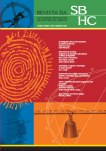Observações e descrições astronômicas de indígenas brasileiros
a visão dos missionários, colonizadores, viajantes e naturalistas
Keywords:
ethnoastronomy, ethnoscience, history of indigenous knowledge – Brazil, travelersAbstract
There is in Brazil a great number of chronicles, historical records and reports of travelers, colonists, missionaries and naturalists that have been in contact with the native peoples since the arrival of the Portuguese. This dissertation examines some of the most important historical reports that hold information on indigenous ethnoastronomy. The objective of this work is to construct a general picture of indigenous astronomical knowledge as described and interpreted by Europeans and Brazilian researchers. We selected studies conducted from the 16th to the first half of the 20th centuries that have historical importance in general or are particularly rich in ethnoastronomical information. All this historical information is compared with recent ethnoastronomical studies on some currently existent indigenous groups. Few studies on ethnosciences have been conducted in Brazil, in spite of the great diversity of indigenous ethnic groups within the Brazilian territory, each and everyone of them provided with a rich corpus of knowledge built and transmitted in the course of its history. Therefore, it is important to map out, systematize and divulge the descriptive and empirical astronomical knowledge of Brazilian indigenous peoples, whose overall knowledge has historically been barely recognized. During the first stage of this study, we examined the Brazilian ethnohistorical literature so as to identify works holding information on subject. The next step consisted of an analysis of every selected study, where we could find descriptions of constellations, cosmogony, stellar myths, calendar systems and some empirical astronomical knowledge. In the course of this activity, we have noticed an inclination on the missionaries’ part towards knowledge on indigenous cosmogony, while naturalists reveal sometimes disdain for the “indolent”, “lazy” and “phlegmatic” indigenous behavior. This prejudice, discernible in their work, may explain their relative lack of ethnoastronomical description. Some important differences between western and indigenous astronomies were also identified, especially in their concepts of constellations. If we perceive them as a “star-to-star” body, some indigenous peoples recognize them as dark areas of the Milky Way.


